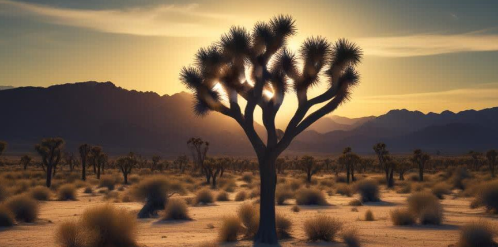
Camping Under the Stars in Joshua Tree: A Romantic Adventure Awaits:
Joshua Tree National Park, with its stunning desert landscapes and unparalleled night skies, offers an enchanting experience for couples seeking adventure and romance. This guide explores the best activities, dining options, and travel tips for an unforgettable camping trip under the stars.
A Brief History of Joshua Tree National Park:
Established as a national monument in 1936 and later designated a national park in 1994, Joshua Tree National Park is famous for its unique Joshua trees, rock formations, and diverse ecosystems. The park’s name comes from the distinctive trees that resemble the biblical figure Joshua raising his arms to the sky. The area has a rich history, with Native American tribes such as the Cahuilla and Serrano inhabiting the region for thousands of years. Today, it serves as a sanctuary for wildlife and a haven for stargazers.
Joshua Tree National Park, located in southeastern California, boasts a rich and varied history that reflects the interplay between its natural beauty and human activity over thousands of years. This overview explores the park’s cultural heritage, from its earliest inhabitants to its designation as a national park.
Early Inhabitants
The history of Joshua Tree begins with the Pinto Culture, the earliest known residents who inhabited the area between 8000 and 4000 BCE. These hunter-gatherers relied on the region’s resources for sustenance, utilizing stone tools and spear points discovered in archaeological sites throughout the park. They gathered seasonal plants and hunted local game, establishing a deep connection with the desert landscape.
Following the Pinto Culture, several Native American tribes, including the Serrano, Cahuilla, and Chemehuevi, lived in and around what is now Joshua Tree. These tribes established small villages near water sources, particularly at the Oasis of Mara in present-day Twentynine Palms. They utilized the Joshua tree (Yucca brevifolia) for food and materials, crafting baskets and sandals from its fibers. The tribes also left behind rock art that can still be seen today, showcasing their spiritual connection to the land.
European Exploration
The first European encounter with Joshua trees occurred in 1772 when a group of Spaniards led by Pedro Fages spotted them while pursuing native converts who had escaped a mission in San Diego. This marked the beginning of European interest in the area. By 1823, Mexican expeditions had explored parts of what would later become the park, paving the way for American fur trappers like Jedediah Smith, who traversed nearby trails in search of new territories.
The Gold Rush and Settlement
The mid-19th century they brought significant changes to Joshua Tree with an influx of miners during California’s Gold Rush. Many sought valuable minerals within the park’s rugged terrain. As mining operations expanded, cattle ranchers also entered the area to graze livestock and use local water sources. This period saw increased human activity that began to alter the landscape.
In the early 20th century, homesteaders arrived, drawn by the promise of land ownership through the Homestead Act of 1862. They attempted to cultivate crops and raise animals in this challenging environment, but many ultimately abandoned their claims due to harsh living conditions.
Conservation Efforts
Recognizing the need for preservation amid increasing development and exploitation of resources, Minerva Hamilton Hoyt emerged as a pivotal figure in advocating for Joshua Tree’s protection. A passionate conservationist who fell in love with the desert landscape, Hoyt organized exhibitions showcasing desert flora to raise awareness about its ecological importance. Her efforts culminated in President Franklin D. Roosevelt establishing Joshua Tree as a national monument on August 10, 1936, protecting approximately 825,000 acres.
Despite this initial protection, mining interests led to a reduction of park boundaries by about 290,000 acres in 1950. However, conservation efforts continued throughout the latter half of the 20th century.
National Park Designation
On October 31, 1994, following extensive advocacy and public support, Joshua Tree was redesignated as a national park under the California Desert Protection Act. This act not only restored previously removed lands but also expanded park boundaries by an additional 234,000 acres. Today, Joshua Tree National Park encompasses over 795,000 acres of diverse ecosystems spanning both the Mojave and Colorado deserts.
Cultural Heritage Today
Joshua Tree National Park is not only a haven for outdoor enthusiasts but also serves as a living testament to its rich cultural history. The park contains over 500 known archaeological sites and numerous historic structures reflecting its past inhabitants’ lifestyles and interactions with the environment.
Efforts continue to preserve both cultural resources and natural habitats within the park. The National Park Service collaborates with local tribes to ensure that traditional practices are respected and that historical knowledge is passed on to future generations.
The history of Joshua Tree National Park is a tapestry woven from ancient cultures, European exploration, settlement challenges, conservation triumphs, and ongoing efforts to protect this unique landscape. As visitors explore its stunning vistas today, they walk through a space that has been shaped by millennia of human interaction with nature—a true testament to both resilience and reverence for this remarkable desert environment.
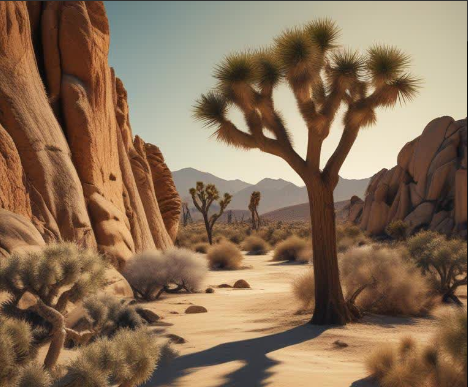
Top 10 Things for Couples to Do While Camping Under the Stars in Joshua Tree:
Camping under the stars in Joshua Tree National Park is an enchanting experience, especially for couples looking to connect amidst breathtaking desert landscapes. Here are ten romantic activities that will enhance your adventure and create lasting memories.
Stargazing at Night
The night sky in Joshua Tree is one of its most captivating features. With minimal light pollution, the park offers a stunning view of the Milky Way and countless stars. Bring a blanket, lie back, and enjoy the celestial show. For an added touch, download a stargazing app to identify constellations together.
Sunrise at Cholla Cactus Garden
Start your day with a romantic sunrise at the Cholla Cactus Garden. The sight of the sun illuminating the fuzzy cacti creates a magical atmosphere perfect for couples. Arrive early to witness the transformation of colors as dawn breaks over the desert landscape.
Hiking to Heart Rock
Take a short hike to Heart Rock, a naturally occurring rock formation shaped like a heart. This easy trail is ideal for couples and provides a picturesque backdrop for photos and proposals alike. Enjoy each other’s company as you explore the unique rock formations that make Joshua Tree famous.
Picnic at Keys View
Pack a picnic and head to Keys View for breathtaking panoramic views of the Coachella Valley and San Andreas Fault. Watching the sunset from this vantage point is incredibly romantic, making it an ideal spot for a quiet meal together while soaking in the beauty of nature.
Sound Bath at the Integratron
Experience relaxation like never before with a couples sound bath at the Integratron, a unique structure known for its healing properties. The sound bath involves lying down while quartz crystal singing bowls create soothing sounds that promote tranquility and connection.
Visit Pappy & Harriet’s
Enjoy a lively night out at Pappy & Harriet’s in nearby Pioneertown, where you can savor delicious food and live music. This iconic venue is known for its vibrant atmosphere and is perfect for couples looking to unwind after a day of exploring.
Art Exploration at Mojaveland Mini Golf
Combine fun and creativity by visiting Mojaveland Mini Golf, where you can play mini-golf among unique art installations. This playful activity allows couples to engage in friendly competition while appreciating local art.
Nighttime Photography
Capture your adventure with nighttime photography sessions. Experiment with long-exposure shots to create stunning images of star trails or illuminated landscapes. This activity not only enhances your photography skills but also allows you to bond over shared creativity.
Relaxing Hammock Time
Bring along hammocks to set up between two sturdy trees at your campsite or in designated areas within the park. Spend some quality time swinging gently in the breeze while enjoying each other’s company and the sounds of nature around you.
Explore Hidden Valley
Hike through Hidden Valley, known for its stunning rock formations and rich history as a cattle rustler hideout in the 1800s. This relatively easy hike offers opportunities for exploration and discovery, making it perfect for couples who enjoy outdoor adventures together.
Joshua Tree National Park provides countless opportunities for romance and adventure under its starry skies. Whether you’re stargazing, hiking, or enjoying local cuisine, these activities will help deepen your connection with your partner while creating unforgettable memories in this stunning desert landscape. So pack your bags, grab your partner, and get ready for an enchanting escape into nature!
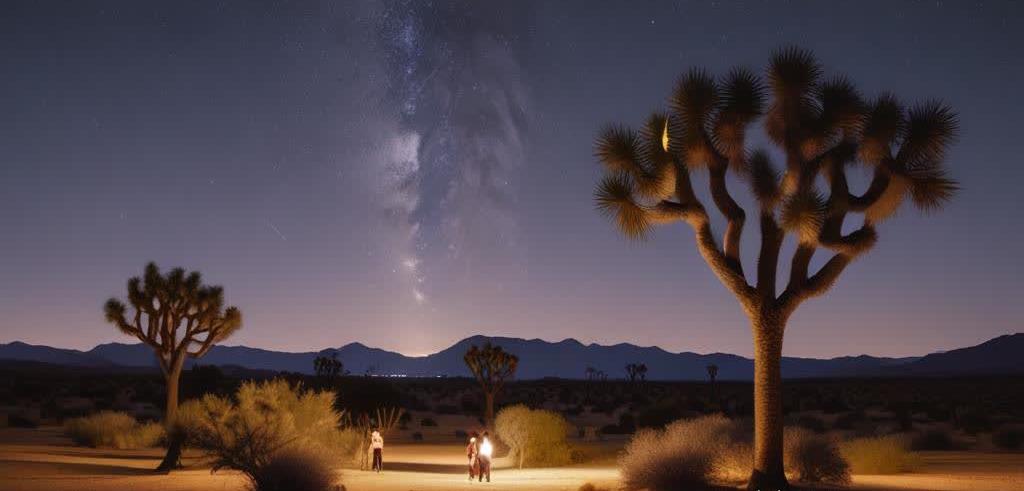
Nightlife in Joshua Tree: Best Nightclubs and Bars:
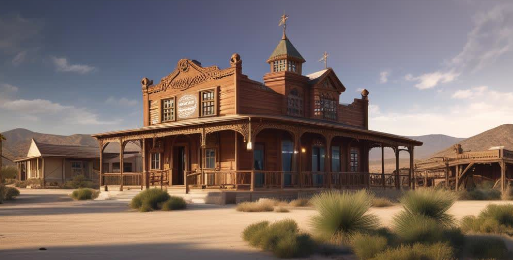
Pappy & Harriet’s Pioneertown Palace
Location: Pioneertown, CA (about 4 miles from Joshua Tree)
Description: This iconic venue is a must-visit for music lovers. Known for its lively atmosphere, Pappy & Harriet’s hosts performances by both local bands and big-name artists. The food menu features mouthwatering BBQ and burgers, making it an excellent spot for dinner before the show. The rustic decor and outdoor seating enhance the experience, allowing you to soak in the desert vibe while enjoying live music.
Joshua Tree Saloon
Location: 61835 29 Palms Hwy, Joshua Tree, CA
Description: Known as “The Gateway to Joshua Tree,” this bar and restaurant offers a quirky Old West vibe with pool tables and dartboards. It’s popular for its karaoke nights on Thursdays and Fridays, live bands on Saturdays, and open mic nights during the week. The menu features hearty American fare like burgers and steaks, perfect for refueling after a day of hiking.
Más o Menos
Location: 66031 29 Palms Hwy, Joshua Tree, CA
Description: This cozy spot is known for its laid-back atmosphere and delicious Mexican-inspired dishes. Más o Menos serves up craft cocktails and offers an inviting outdoor patio where you can enjoy your drinks under the stars. The friendly staff and vibrant decor make it a great place to relax after a long day.
The Tiny Pony Tavern
Location: 57205 29 Palms Hwy, Yucca Valley, CA (near Joshua Tree)
Description: This charming tavern offers a welcoming atmosphere with a selection of craft beers and cocktails. It features live music events and themed nights, making it a fun place to hang out with friends or meet new people. The Tiny Pony also serves delicious bar food that complements its drink offerings.
The Copper Room
Location: 57360 Aviation Dr, Yucca Valley, CA
Description: A bit further out in Yucca Valley, The Copper Room is known for its upscale dining experience paired with a cozy bar atmosphere. It offers a selection of wines and craft cocktails alongside a menu featuring seasonal dishes made from local ingredients. This venue is perfect for couples looking for a more intimate dining experience before enjoying drinks.
Giant Rock Meeting Room
Location: 1131 Old Woman Springs Rd, Yucca Valley, CA
This local hotspot hosts various events including concerts featuring local artists, karaoke nights, and community gatherings. With its homey vibe and delicious in-house pizzas, Giant Rock Meeting Room is perfect for those looking to mingle with locals while enjoying good food and entertainment.
Z Club
Location: 61877 29 Palms Hwy, Joshua Tree, CA
Description: Z Club is known for its relaxed atmosphere where you can enjoy drinks while playing pool or darts. It’s a great place to unwind after exploring the park during the day.
Swordfish Pub
Location: 6225 Sunburst St, Joshua Tree, CA
Description: A laid-back pub that offers a cozy environment to enjoy drinks with friends. Swordfish Pub has limited hours but is known for its friendly service and welcoming vibe.
Radio Free Joshua Tree
Location: 61595 29 Palms Hwy, Joshua Tree, CA
Description: A unique venue that combines music with community spirit; Radio Free Joshua Tree hosts various events including live music performances and community gatherings.
Joshua Tree’s nightlife may not be as bustling as larger cities, but it offers an eclectic mix of bars and venues that provide great food, live music, and unique atmospheres perfect for couples or friends looking to unwind after a day of adventure in the park. Whether you’re enjoying karaoke at the Joshua Tree Saloon or catching a live band at Pappy & Harriet’s, there’s something for everyone in this charming desert town!
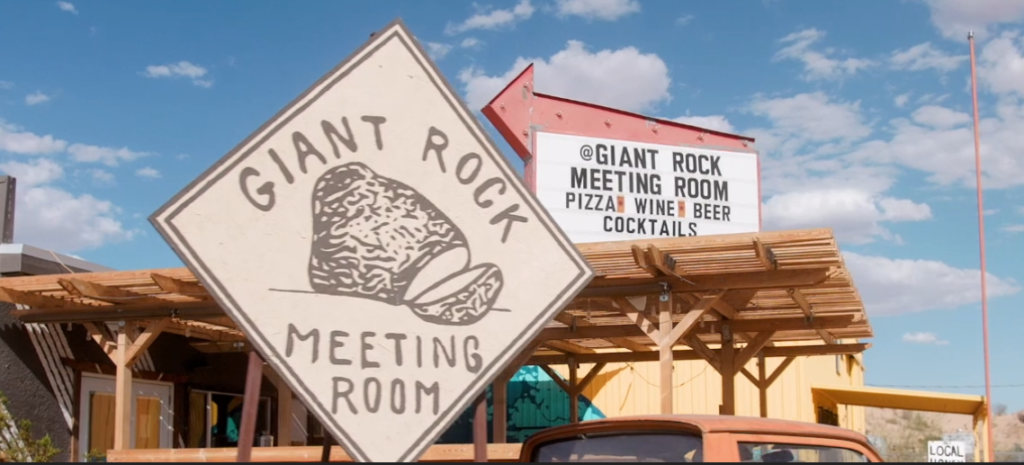
Trending Best Places to Visit in Joshua Tree:
Joshua Tree is a captivating destination that offers a unique blend of natural beauty, outdoor activities, and cultural experiences. Here are some of the trending best places to visit in and around Joshua Tree National Park that you shouldn’t miss:
1. Joshua Tree National Park
Description: The park itself is the main attraction, featuring stunning rock formations, unique Joshua trees, and vast desert landscapes. Popular areas include Hidden Valley for hiking, Barker Dam for wildlife viewing, and Keys View for breathtaking panoramic vistas of the Coachella Valley and beyond.
Must-See Spots:
Skull Rock: Easily accessible from the road, this rock formation resembles a skull and is a favorite photo spot.
Cholla Cactus Garden: A dense concentration of teddy bear cholla cacti that looks especially beautiful at sunrise.
2. Cottonwood Spring Oasis
Description: Located in the southern part of the park, this oasis features a campground and several hiking trails. It’s a great spot for birdwatching and exploring the area’s rich history related to Native American tribes.
Activities: Hike to the Lost Palms Oasis or enjoy ranger-led programs that delve into the area’s ecology and history.
3. Pioneertown
Description: Originally built as a movie set in the 1940s, Pioneertown is now a quirky town where visitors can experience Old West charm. The main street features shops, art galleries, and live music venues.
Highlight: Pappy & Harriet’s Pioneertown Palace, known for its live music and delicious food, is a must-visit.
4. 49 Palms Oasis
Description: This beautiful desert oasis is accessible via a moderately challenging hike. The trail leads to a lush area filled with palm trees and stunning views of the surrounding mountains.
Tip: Bring water and snacks to enjoy at the oasis while taking in the serene environment.
5. Keys View
Description: This viewpoint offers one of the best panoramic views in Joshua Tree National Park. On clear days, you can see all the way to Mexico!
Best Time to Visit: Arrive at sunset for stunning colors over the Coachella Valley.
6. Joshua Tree Coffee Company
Description: A local favorite for coffee lovers, this café offers freshly roasted coffee with a cozy atmosphere. It’s perfect for a midday break after exploring the park.
Experience: Enjoy your coffee on their outdoor patio surrounded by desert scenery.
7. Oasis of Mara
Description: This historical site features a natural spring that has been an important resource for local Native American tribes. The area includes walking paths that highlight native plants and wildlife.
Activities: Take a leisurely stroll while learning about the cultural significance of this oasis.
8. Arch Rock
Description: A stunning natural rock formation that can be accessed via a short hike from the White Tank Campground. The arch is perfect for photography, especially during sunrise or sunset.
Tip: The trail is relatively easy and provides opportunities to explore other nearby rock formations.
9. Desert Queen Mine
Description: Explore remnants of an old gold mine that operated for over 75 years. The hike to the mine offers insights into the mining history of the area.
Trail Details: The trail is about 1.8 miles round trip and takes you through beautiful desert landscapes.
10. Joshua Tree Music Festival
Description: If you’re visiting during May or October, don’t miss this local music festival featuring diverse genres, workshops, and community activities.
Experience: Enjoy live performances in a stunning desert setting while connecting with fellow music lovers.
Joshua Tree offers an array of attractions that cater to nature lovers, adventure seekers, and those looking to soak up local culture. From breathtaking landscapes within Joshua Tree National Park to charming towns like Pioneertown, there’s something for everyone to enjoy in this unique desert environment. Whether you’re hiking among iconic rock formations or sipping coffee at a local café, your visit will be filled with unforgettable experiences!
Top Restaurants and Cuisine:
Joshua Tree offers a diverse culinary scene that reflects its unique desert environment and artistic community. Here’s an exploration of the top restaurants and cuisines in the area, perfect for fueling your adventures or enjoying a cozy meal after a day of exploring.
1. Pappy & Harriet’s Pioneertown Palace
Cuisine: American, BBQ
Description: A legendary venue known for its live music and hearty BBQ dishes, Pappy & Harriet’s is a must-visit. Located in nearby Pioneertown, this restaurant has hosted famous artists and offers a vibrant atmosphere with outdoor seating.
Highlights: Santa Maria-style barbecue, burgers, and a lively music scene.
2. Crossroads Café
Cuisine: Diner-style, American
Description: Known for its creative spins on classic diner fare, Crossroads Café serves breakfast and lunch in a quirky setting. The café offers vegan options and is popular among hikers looking to refuel after a day on the trails.
Highlights: Hearty breakfasts, including pancakes and omelets, along with fresh salads and sandwiches.
3. Joshua Tree Saloon
Cuisine: American, Pub fare
Description: This Old West-themed saloon offers burgers, steaks, and seafood in a fun atmosphere complete with pool tables and dartboards. It’s a great spot for happy hour or casual dining after exploring the park.
Highlights: The Cowgirl Gun Slinger cocktail and hearty portions make it a favorite among locals and tourists alike.
4. JT Country Kitchen
Cuisine: American, Comfort food
Description: As the oldest restaurant in Joshua Tree, JT Country Kitchen is beloved for its homestyle cooking. The cozy vibe makes it perfect for breakfast or lunch with classic dishes like pancakes, sandwiches, and daily specials.
Highlights: Mama Uy’s specialties are particularly popular among regulars.
5. Más o Menos
Cuisine: Mexican
Description: This vibrant eatery serves up delicious Mexican-inspired dishes in a casual setting. With outdoor seating available, it’s an excellent choice for enjoying a meal under the stars.
Highlights: Tacos and burritos made with fresh ingredients; the atmosphere is lively and welcoming.
6. Sky High Pie
Cuisine: Pizza
Description: Known for its delicious pizzas and laid-back vibe, Sky High Pie is perfect for casual dining. The menu features creative toppings and fresh ingredients that make each pizza unique.
Highlights: Their signature pies are popular among locals; don’t forget to try their dessert options!
7. Food for Thought Café
Cuisine: Vegetarian, Vegan
Description: Located at the Joshua Tree Retreat Center, this café focuses on healthy eating with an emphasis on vegetarian and vegan options. It’s a great place to enjoy wholesome meals made from fresh ingredients.
Highlights: Smoothies and salads are particularly popular; the ambiance is peaceful and inviting.
8. La Copine
Cuisine: Eclectic American
Description: A bit off the beaten path but well worth the drive from Joshua Tree, La Copine offers an upscale dining experience with a focus on fresh ingredients. The menu features unique dishes that change seasonally.
Highlights: Duck liver mousse and pork belly banh mi are standout items; perfect for brunch or lunch.
Joshua Tree’s culinary scene is as diverse as its landscapes. From hearty breakfasts to vibrant dinners under the stars, these restaurants offer delicious options that cater to various tastes. Whether you’re craving BBQ at Pappy & Harriet’s or looking for healthy bites at Food for Thought Café, you’ll find plenty of delightful dining experiences to complement your desert adventure!
Top 15 Things for Families to Do While Camping Under the Stars in Joshua Tree :
- Junior Ranger Program: Engage kids with educational activities about nature.
- Nature Scavenger Hunt: Create a list of items to find around your campsite or on hikes.
- Rock Climbing Lessons: Family-friendly climbing classes are available in designated areas.
- Biking Trails: Rent bikes to explore some of the park’s scenic routes.
- Picnicking at Hidden Valley: Enjoy lunch surrounded by breathtaking views.
- Star Party Events: Participate in family-friendly stargazing events hosted by park rangers.
- Wildflower Viewing (Spring): Visit during springtime to see vibrant wildflowers bloom.
- Photography Walks: Teach kids how to capture nature through photography.
- Visit Keys View at Sunset: Witness breathtaking views as day turns to night.
- Campfire Storytelling: Share stories or ghost tales around the campfire.
- Nature Journaling: Encourage kids to draw or write about their experiences in nature.
- Geocaching Adventures: Use GPS devices or apps to find hidden treasures in the park.
- Explore Arch Rock Trail: A short hike leading to an impressive natural arch formation.
- Attend Ranger-led Programs: Learn about local wildlife and plants through interactive programs.
- Stargazing Kits for Kids: Equip children with binoculars or star maps for their own stargazing adventures.
Transportation Tips:
When planning your visit to Joshua Tree National Park, understanding transportation options is essential for a smooth and enjoyable experience. Here are some key transportation tips to help you navigate the area effectively:
Getting to Joshua Tree
Air Travel
Palm Springs International Airport (PSP): The closest major airport, located about 29 miles from the park. It offers numerous flights from major airlines and is a convenient gateway for visitors.
Other Airports: Ontario International Airport and Los Angeles International Airport are also options, but expect longer travel times (2-3 hours) due to traffic.
Driving Directions
From Palm Springs: Take I-10 East, then exit onto CA-62 toward Joshua Tree. This route is straightforward and well-marked.
From Los Angeles: Take I-10 East, then CA-62 East to reach the park.
From San Diego: Head north on I-15, then east on CA-79 and CA-62.
Ground Transportation Options
Rental Cars
Rental cars are widely available at Palm Springs International Airport and other nearby airports. If you plan to explore off-road areas within the park, consider renting a four-wheel-drive vehicle for better access to rugged terrain.
Public Transportation
While public transportation options are limited in the area, there are shuttle services available from Palm Springs to Joshua Tree. However, these may not run frequently, so check schedules in advance.
Taxi and Rideshare Services
Local taxi services such as City Cab and Coachella Valley Taxi can provide transportation from nearby towns to the park. Rideshare services like Uber and Lyft may also be available in the area.
Navigating Within Joshua Tree National Park
Park Entrances
The park has multiple entrances: the West Entrance near the Joshua Tree Visitor Center, the North Entrance near Twentynine Palms, and the South Entrance near Cottonwood Springs. Each entrance provides access to different parts of the park.
Road Conditions
Most roads within Joshua Tree are well-maintained but can be narrow or winding. Be cautious while driving, especially during peak visitation times when traffic can increase.
Parking
Parking is available at various trailheads and attractions throughout the park. Arrive early during peak seasons to secure a spot, as parking can fill up quickly.
Biking and Hiking
For those looking for an active way to explore, consider biking or hiking within the park. There are designated trails for both activities that allow you to experience the stunning landscapes up close.
Tips for a Smooth Experience:
Plan Ahead: Before your trip, familiarize yourself with the park’s layout and plan your routes based on what you want to see.
Check Weather Conditions: Weather in Joshua Tree can vary significantly; be prepared for hot days and cool nights, especially in winter.
Stay Hydrated: Always carry plenty of water while exploring, as desert conditions can lead to dehydration quickly.
Respect Wildlife: Keep a safe distance from wildlife and follow all park regulations regarding animal interactions.
Transportation in and around Joshua Tree National Park is manageable with proper planning. Whether you’re flying into Palm Springs or driving from a nearby city, knowing your options will help you make the most of your visit. Enjoy exploring this unique desert landscape!
About Wildlife in Joshua Tree:

Joshua Tree National Park is not only famous for its stunning landscapes and iconic Joshua trees but also for its diverse wildlife. The park is home to a rich array of animal species that thrive in the unique desert environment. Here’s an overview of the wildlife you can encounter while exploring Joshua Tree:
Mammals
Desert Bighorn Sheep
These majestic animals are often seen near rocky outcroppings. They are well adapted to the steep terrain of the park and can often be spotted grazing in the early morning or late afternoon.
Coyotes
Commonly found throughout the park, coyotes are intelligent predators that hunt small mammals. Their adaptability allows them to thrive in various environments, making them a frequent sight.
Black-Tailed Jackrabbit
Known for their long ears and powerful hind legs, these rabbits are active during dawn and dusk. They can often be seen foraging for food.
Desert Tortoise
A symbol of the Mojave Desert, these tortoises can live over 100 years and are typically found in areas with plenty of vegetation. They spend much of their time underground to escape the heat.
Kangaroo Rat
This small mammal is known for its long hind legs that allow it to hop like a kangaroo. Kangaroo rats are nocturnal and can often be seen foraging at night.
Birds
Joshua Tree is a birdwatcher’s paradise, with over 250 species recorded:
California Condor
Once on the brink of extinction, these magnificent birds have been reintroduced to the wild. Spotting a California condor is a rare and exciting experience.
Roadrunner
Famous for their speed, roadrunners are often seen darting across trails in search of food, including insects and small reptiles.
Cedar Waxwing
These birds are known for their striking plumage and are often found near fruiting trees and shrubs within the park.
Western Bluebird
With their vibrant colors, these birds can be spotted flitting about in open areas, particularly during spring and summer.
Reptiles
The park hosts a variety of reptiles, including:
Mojave Rattlesnake
Recognizable by its distinct rattle, this venomous snake plays an important role in the desert ecosystem. They are generally shy and prefer to avoid humans.
Western Diamondback Rattlesnake
Another venomous species, they are characterized by their diamond-patterned backs. Like other rattlesnakes, they should be admired from a distance.
Lizards
Various lizard species inhabit Joshua Tree, including the common side-blotched lizard and the colorful desert iguana.
Invertebrates
In addition to vertebrates, Joshua Tree is home to numerous invertebrate species:
Black Widow Spider
Easily identifiable by their glossy black bodies and red hourglass markings, these spiders are venomous but generally avoid human contact.
Scorpions
Scorpions are common in desert environments; they tend to be nocturnal and can be found under rocks or in crevices.
Butterflies
Over 75 species of butterflies have been recorded in the park, making it an interesting spot for butterfly enthusiasts during warmer months.
Conservation Awareness
While exploring Joshua Tree’s wildlife, it’s crucial to practice responsible wildlife viewing:
Keep a Safe Distance: Always observe animals from a distance to avoid disturbing them.
Do Not Feed Wildlife: Feeding animals can disrupt their natural behaviors and diet.
Stay on Trails: Stick to established trails to protect fragile habitats.
Respect Their Space: If you encounter wildlife, give them space to move freely without interference.
Joshua Tree National Park offers an incredible opportunity to observe diverse wildlife in their natural habitat. From majestic bighorn sheep to elusive desert tortoises and vibrant birdlife, there’s much to discover for nature lovers and wildlife enthusiasts alike. Remember to respect these creatures and their environment as you explore this unique desert landscape!

Travel Tips for Camping Under the Stars in Joshua Tree:
Camping under the stars in Joshua Tree National Park is a magical experience, but preparation is key to ensuring a safe and enjoyable trip. Here are some comprehensive travel tips to help you make the most of your camping adventure in this stunning desert landscape.
Essential Packing List
Shelter and Sleeping Gear
-
Tent: Choose a durable tent suitable for desert conditions. Ensure it is well-ventilated to handle warm days and insulated for cooler nights.
-
Sleeping Bag: Opt for a sleeping bag rated for temperatures lower than what you expect at night. Nights can drop significantly, so a bag rated for 20°F or lower is ideal.
-
Sleeping Pad: A sleeping pad provides insulation from the cold ground and adds comfort.
Clothing
-
Layered Clothing: The desert experiences extreme temperature fluctuations. Pack lightweight, breathable clothing for the day and warmer layers (like fleece or down jackets) for the night.
-
Sun Protection: Bring a wide-brimmed hat, sunglasses, and sunscreen to protect against the harsh desert sun.
-
Sturdy Footwear: Invest in good hiking boots that provide support and protection against rocky terrain.
Hydration and Nutrition
-
Water: Carry at least 2-3 gallons of water per person per day, especially during hot months. Hydration is crucial in the dry desert climate.
-
Snacks and Meals: Pack non-perishable snacks like nuts, dried fruits, and energy bars. For meals, consider easy-to-cook options like pasta or canned goods.
Cooking Equipment
-
Portable Stove: Bring a camping stove or portable grill for cooking meals. Ensure you have sufficient fuel.
-
Cookware: A lightweight set of pots, pans, and utensils will make meal prep easier.
-
Cooler: If you’re bringing perishables, a cooler will help keep food fresh.
Lighting and Navigation
-
Headlamp/Flashlight: A headlamp is ideal for hands-free lighting at night. Bring extra batteries as well.
-
Red Flashlight: This helps preserve your night vision while stargazing or moving around the campsite after dark.
Safety Gear
-
First Aid Kit: Include essentials such as band-aids, antiseptic wipes, pain relievers, and any personal medications.
-
Multi-tool or Knife: Useful for various tasks around the campsite.
Weather Considerations
-
Temperature Variations: Be prepared for significant temperature changes between day and night. Daytime can be hot (up to 100°F in summer), while nights can drop to 40°F or lower.
-
Check Forecasts: Always check the weather forecast before your trip. Conditions can change rapidly in the desert.
Wildlife Awareness
-
Respect Wildlife: Keep a safe distance from all wildlife. Do not feed animals or leave food out, as this can attract them to your campsite.
-
Be Cautious at Night: Watch where you step at night; snakes and other wildlife may be active after dark.
Camping Etiquette
-
Leave No Trace: Follow Leave No Trace principles by packing out all trash, minimizing campfire impact, and respecting natural habitats.
-
Campfire Regulations: Check current fire restrictions before your trip. If allowed, use established fire rings and keep fires small.
Stargazing Tips
-
Best Viewing Spots: Find an open area away from artificial lights for optimal stargazing. Popular spots include Keys View and Hidden Valley.
-
Bring Binoculars or a Telescope: Enhance your stargazing experience by bringing binoculars or a small telescope to observe celestial bodies more closely.
Transportation Tips
-
Plan Your Routes: The park is expansive; plan your driving routes in advance to maximize your time exploring.
-
Cell Service Limitations: Expect limited cell service within the park; download maps offline before arriving.
Conclusion
Camping under the stars in Joshua Tree National Park offers an unforgettable experience filled with adventure and natural beauty. By preparing adequately with the right gear, understanding weather conditions, respecting wildlife, and following camping etiquette, you can ensure a safe and enjoyable trip that allows you to fully immerse yourself in this stunning desert environment. Enjoy your journey into the wild!




